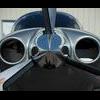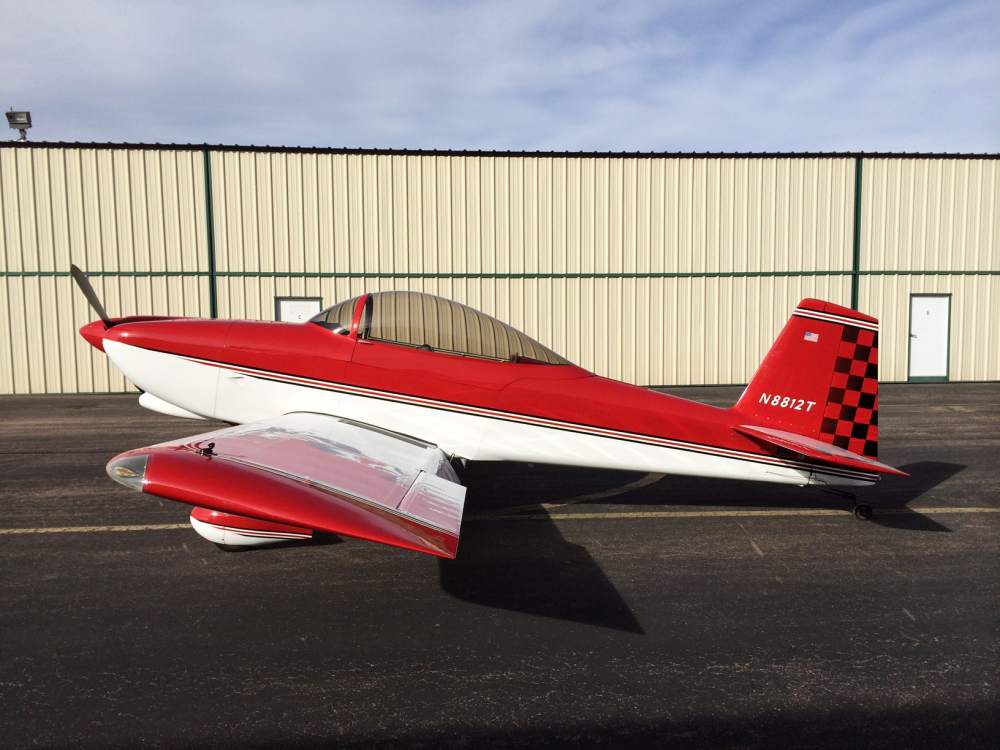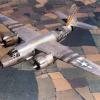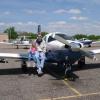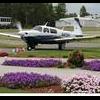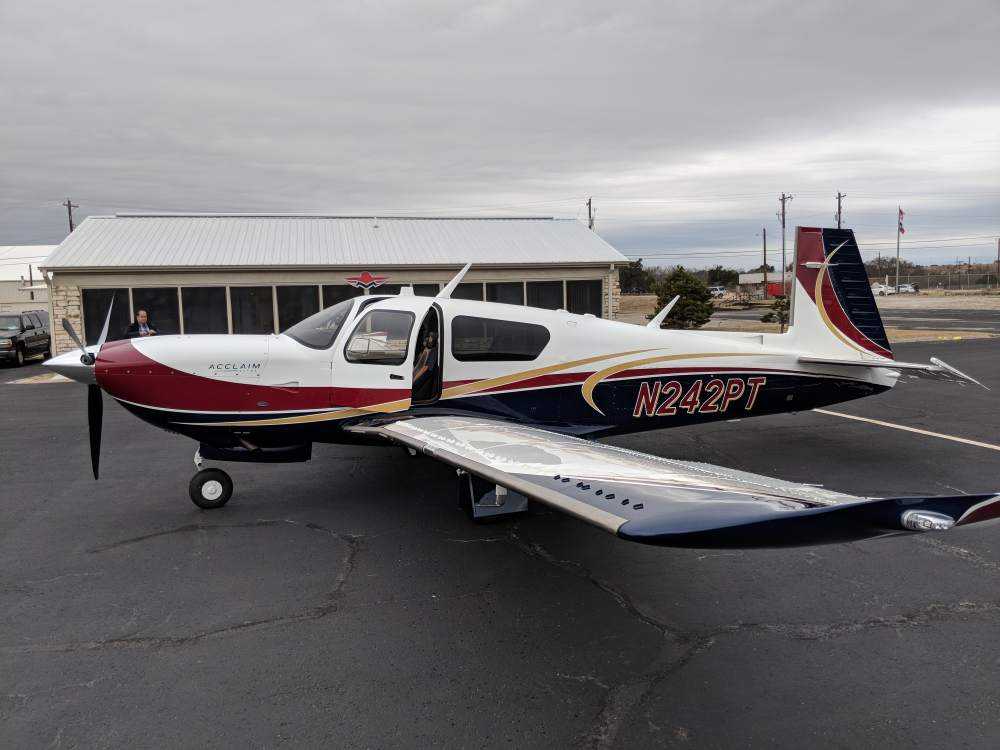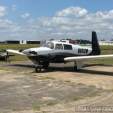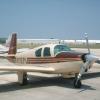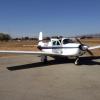Leaderboard
Popular Content
Showing content with the highest reputation on 03/21/2018 in all areas
-
Ball park if you were doing Aspen PFD/MFD, GTN 750,650, GTX330ES, GMA35C, Stec 60pss, JPI EDM 730, new paint, new interior today would be at minimum $100 AMUs. Even more depending on how extensive of a paint job and interior he did. This doesn't account for the engine reman costs either.3 points
-
If it is squawk free, low time engine reman, lower time airframe, newer paint and interior, with a modern panel, I can see some people buying around his price. I'd ask for a little more info on the autopilot. Although he needs his airspeed indicator or fuel flow overhauled. Its providing faulty readings...3 points
-
To the OP- welcome to winter in the PacNW. Living up here has its perks- but winter (IMC) flying almost always carries icing risk with it. high MEA’s mean you’re pretty much always above the freezing level. I have a TKS missile, which has the power to get me up into the high teens, and the TKS to help me in the event of an icing encounter. My planning process though has me looking very carefully at cloud tops and bottoms. I don’t feel compelled to fly IFR very often- and pretty much never do in the winter, part of the reason for that may be that I’m able to maintain currency during my “day job.” Don’t feel like you NEED to file IFR just because you have the instrument ticket. Flying VFR can be safer, faster and more fuel efficient, especially in the conditions you describe. Where ATC is restricted with MEA’s and traffic, you can duck below cloud decks and maneuver left and right of course while VFR to avoid buildups. I’ve heard some pilots say that they fly IFR do they “don’t have to worry about traffic.” That’s not necessarily true- if a pilot is VMC and on an IFR flight plan, they still have the responsibility of looking for traffic and avoiding it if it’s a factor. Regardless- IFR is a great tool, but it’s just that, a tool- use it when it’s appropriate for your mission, but don’t feel like you MUST use it at all times. the only thing I’d mention in your decision making process is this: in an unprotected plane, I would not climb out of known VMC, into sub-zero clouds, looking for a top, even if there are no pireps of icing. Around here you will almost certainly pick up some amount of ice doing that, unless you’re well below freezing (-15C or lower). If ATC needs you to climb for a MEA, I’d rather cancel and stay where I’m legal and safe. casual observations flying in this area (K-Falls, LKV, MFR, BDN, RDD) over the past 6 years- most icing I see occurs between 8-12K, however I’ve seen some buildup as high as 16k. mostly light-moderate rime Ive seen heavy once or twice around here- and it fodded out several turbine motors, requiring very expensive inspections and imparted stator blade damage to the compressors... even with the engine heats running. My best estimation is that TKS would have been quickly overwhelmed by that day’s icing. That was at 16-ish K. the worst icing seems to occur over the lakes, or over the mountains, where the moisture gets pushed up into the freezing layer. if it’s snowing on the ground, more often than not the tops are fairly low (10-12K). if you are above the clouds and see a “halo” around the shadow of your plane and freezing conditions abound below, you’ll probably see some ice. a motor is good. A turbo charger is nice, a turbine is better, afterburners are the best. Unless you’re low on fuel. In which case being on the ground is the best. realize that all I’ve mentioned above is just some casual observations from flying in this area, and flying through some pretty gnarly weather both professionally and personally over the years. The FIKI systems are nice, but they have limitations too- vary your risk tolerance based on your skill set and don’t be afraid to dial that risk level back if you’ve got passengers on board. Stay safe out there!3 points
-
After posting my Cirrus PIREP, a couple MS members asked me to provide a PIREP for the RV-8, which I'm more than happy to do. I hope the MS moderators will indulge my posting of this topic, which is decidedly non-Mooney. I've been flying turbo Mooneys for almost 20 years. I owned an M20K Encore from 2000 until 2011, and I traded it for my Acclaim that year, and I've been flying the Acclaim ever since. I absolutely love it, but these planes are meant to be flown long distances high and fast on autopilot, and I was yearning for something that I could hand fly on Saturday mornings for a couple of hours or so, low and fast. I discovered RVs quite by accident. The fellow I bought my Acclaim from had an RV-8 and he took me up in it. I had never heard of them before, but I was hooked. I resolved to buy one someday. Two years later I did. I didn't build my RV; I bought it from the gentleman who did. He did a professional builder assist and spared no expense. He sold me an exceptional airplane. RVs spoke to me for many of the same reasons Mooneys did. They are stone simple and very well engineered. The ailerons and elevator employ push rods. The rudder is driven by cables. Control feel in pitch, bank and yaw is solid and very responsive. Not to mention reliable. My RV-8 is a taildragger. I didn't even have a tailwheel endorsement when I bought it, but I got that done and solved that problem. On to the PIREP. My RV-8 is a joy to fly. It is small, light, overpowered, and simply a blast. It has the Lycoming O-360 A1A engine (180 hp), and a constant speed prop. Empty weight is 1,165 lbs. Very light. My first airplane was a 1980 Piper Archer II with pretty much the same engine, and it weighed more than twice as much. BOARDING You, and maybe your passenger, climb up on the wing, then lower yourselves into the seats. And then you fasten your five-point Hooker harnesses. You pretty much strap the airplane on. TAXIING It's a taildragger, so you have to be quick on your feet, especially in gusty conditions. But it doesn't take long to master. Its ground handling characteristics are very docile. TAKEOFF Line up, put the stick in neutral position, and give her the guns. After about 600 feet or so the tail will rise, and the plane will fly very soon after that. CLIMBOUT Full throttle, pull the stick full aft, and it climbs like a bat out of hell. 1,500fpm at Denver Centennial, 5,800' MSL. CRUISE My plane has elevator and aileron trim. Doesn't take much to trim the airplane. Mine flies straight and, true. AUTOPILOT It has one, but I never use it. Too much fun to hand fly. FLYING What I love about the RV is that it's a very light touch aircraft. I put my thumb and two fingers on the stick and that's all it needs. Think about where you want to go, move the stick gently in that direction, and off you go. I love the bubble canopy. Visibility is amazing. AEROBATICS I've not done any except for aileron rolls (very easy), because I haven't gotten around to have training yet. My RV doesn't have an inverted oil system, so if and when I learn aerobatics I can only do positive-G maneuvers. LANDING Most RV-8 pilots will tell you that wheel landings are the way to go, especially on pavement. I agree, and that's the only way I land mine. Wheel landings in this airplane are very easy if you've had the proper instruction. Nothing more satisfying than pulling one off perfectly, which isn't hard to do after a little bit of practice. Three-pointers are difficult on pavement because the flaps block airflow to the elevators, which stalls the tailwheel and leads to a hobby horse landing. I've heard that it's no problem on grass, but I've never tried that. CONCLUSION The RV-8 is an amazing airplane, one that all Mooney pilots would love. Great looks, great flying, great engineering. I feel very fortunate to have one. Cheers, JZ2 points
-
Ok so in theory, airplanes often cost as much as houses. In my case my plane is about 2/3rds of the cost of the house. Which is in Austin, bought only 3 years ago. But the house is only 1088 sq ft. And my wife has no idea how much has been spent on the plane. I started with an M20C and just kept spending a little more and a little more after that...2 points
-
I don’t understand painting a plane in 2014 and making it look like it was painted in 1984... If you’re going to spend the money...to each his own.2 points
-
Just upgraded my 430W to a 440 about 3 weeks ago. The 540 is indeed much nicer in terms of screen realestate, however the smart thing to do is to buy the 440 and take advantage of using an ipad as a secondary screen thus saving big $$ on purchase and installation costs. Now I do all of my flight planning, freq swaps, etc from the ipad which has a much much larger screen -- and it displays both the comm and nav freqs together. I watched all "Baron Pilot"s" videos on youtube and followed along on the simulator. He has some great content and made it easy to jump right into the 440. I have exclusively used garmin products in the past (G1000, 430, 530, etc)- and that is what I have been familiar with. The luring curve for the IFD440 took about 2 weeks of on and off simulator use in my free time and now I have the layout memorized and it is very user friendly. Much easier and quicker to find what you are looking for on the 440 than in the 430 for new users. My favorite feature of the 440 thus far has been the knobs (crazy right?). Funny enough at the Mooney fly-in last week I was having a hard time adjusting freqs using the touchscreen because the turbulence was so bad. I reached up and grabbed a knob and simply twisted. I didnt have to worry about poking all kinds of buttons on the touchscreen while bumping up and down.2 points
-
The answer is the IFD100 app: https://www.avidyne.com/products/ifd/ifd100.html2 points
-
Yeah right. When do you install the 750/650 combo he has in the plane valued $30k? Or the $7k GTX-345 that is in the panel. Like I said before, people are ignorant on these costs and your post proves. Sent from my iPhone using Tapatalk Pro2 points
-
Looks to me like the mouse built himself a nest in there . . . .2 points
-
I was taught to leave the beacon on at all times for this reason. When you walk away, that flashing light reminds you that the master switch is still on. It has saved my butt a time or two.2 points
-
As I have posted before, I developed a timer that an A&P or reasonably proficient hangar elf can easily install, that will absolutely prevent a cabin or luggage light from running a battery down. It keeps the light(s) on for 10 to 12 minutes after the master is turned off. I will share the circuit diagram or I can build you one for $30. (Sorry, it won't keep you from leaving the master on )2 points
-
Well passed the checkride and took the plane to the shop. They said the servo had corrosion which was shorting out the roll computer. They took both out and sent to STEC for overhaul. This sounds like it’s gonna be expensive. Too bad I can’t get a Garmin GFC500 yet...2 points
-
Repost of the URL from an iPad... https://www.rivetbangers.com/documents/tank_sealant.pdf See if that works... Best regards, -a-2 points
-
Along the same lines as Rich and Paul comments, I'm reminded of something I heard along the way: -If it's bad, go IFR. -If it's really bad, go VFR. (And, BTW, I'm not sure I would've done anything significantly different than exactly what you did.)2 points
-
I had this issue. After taking the switch apart and cleaning the hell out of it, the issue turned out to be one of the crimpon connectors was shorting to ground on the metal bracket around the stall switch. I presume it just bumped around enough to finally short out. Don't overlook the simple and obvious... iain1 point
-
Weather permitting VFR I'll be there. I could use a reason to leave this insanity!1 point
-
1 point
-
We got paid. And he liked us and let us use his aircraft in advertising which was cool. He reminded us of this fact on the next paint job1 point
-
Some guys like the nostalgia of the original factory paint schemes of its era. In the corporate world we find some conservative paint schemes as well. Even Donald Trump's S-76 helicopters we painted. We originally provided him some pretty tricked out contemporary designs. I talked to him on the phone when he was trying to pick out his paint schemes. He asked which one I would pick, and I preferred the more modern contemporary schemes. But he ultimately went with a more conservative black and white with a couple red stripes that he had before. One thing about it was that everyone recognized his aircraft and he didn't want to change it. @201er made a statement to me at last weekend's fly in that when we put the new fancy paint jobs on Mooneys like mine, you lose visual reference of what era aircraft was from. He said you can normally pick out the model year by looking at the paint job.1 point
-
I'd likely be a buyer at $145K for this plane and might go a bit higher. With the standard disclaimer that it passes a proper PPI. I don't like paying for paint or interior as it's such a personal taste thing. But it is worth something. The panel is done well with the exception of the EDM 730. But that's easily rectified. You could likely fly this plane for the next 10 years with nothing but standard annuals each year.1 point
-
1 point
-
What is the concern about the autopilot? Is it because there are two parts listed? The STEC PSS-60 is a pitch control add-on for single axis autopilots like the KAP 100. It can hold altitude, hold a constant rate of climb or descent, and track a glideslope. I have one on my M20J that works together with my Century 21 AP.1 point
-
Thanks for the comments! In retrospect, I still have this safety-blanket sense of "if I'm IFR, someone's watching me in case I have an emergency." Of course, staying IFR almost got me into an emergency, and I could keep VFR flight following anyway, but it's all psychological. I had plenty of room and space to go under or around if I made the decision earlier.1 point
-
Agreed. It is expensive. It seems like there isn’t much else in the market right now that has a low time engine with decent avionics.1 point
-
Thanks, I ordered another Concorde RG 35 AXC from aircraft spruce to replace the one that was installed. I can wait a couple of days for it. I'll try again with a different charging technique to get it up to voltage again, but I am planning a cross country trip for the summer and don't want to have to worry about the battery condition grounding me. iain1 point
-
Complex and beautiful paint job! Wing walk may adhere to paint...but not for long, based on experience. Better to use wing walk 'paper' roll instead of 'slush'1 point
-
My comment was really a complement to the OP. Sorry if it came across otherwise or some type of dig on mooney, that was not the intent.1 point
-
1 point
-
Hartzel is just trying to sell you a new expensive hub. The AD is not a problem just annoying to fly to a prop shop to do it. -Robert1 point
-
1 point
-
I'll take that challenge. I'm 50 and I expect I'll see it in my life time. The naysayers on this thread seem to be expecting that software will have to be programed to handle every possible contingency. But not so, the software is self learning and redeveloping its self. And it can do this much faster than humans can learn anything. I do some work in this field and the curve towards this AI is not linear by any means. It's very steep and going vertical quickly. Expect a few more years of this and then it will all of a sudden be done.1 point
-
1 point
-
1 point
-
On the early flat windshield Boeings (727, 737, 707) your first indication of icing would be on the axle nut of the windshield wiper. Ice would start to build there and it was visible right in front of your eyes. I've seen it 3" out into space from there. Actually one thing most of you will never get a chance of seeing is St. Elmo's Fire. Quite an experience at night up high. Actually used to bring the FAs up front to see it. Oh, wait, I'm day VFR now and enjoying it!! :-)1 point
-
Great video, and even with two years of planning I still wouldn’t have a big enough pair.... It’s wonderful to see the skill level pilots have. Sent from my iPhone using Tapatalk1 point
-
1 point
-
Well said Anthony, OP, please don't base your training on what an insurance underwriter requires from you, but consider basing it on what a well versed Mooney instructor and yourself feel your level of competency is during training. In the long run, you will be many $$ ahead and will also save a bundle on new underwear. Consider @DanM20C or @Kortopates if you get a 231. They own K's they know K's, both are excellent.1 point
-
I could see this Pirep coming... The Cirrus one is pretty easy to take in, then leave... I already have the best plane for that mission... But a two seater, a huge power to weight ratio, and with a bubble canopy.... that thought is going to be with me for a while... Side thought... do you know what company built the canopy for your RV8? we had an MSer that built canopies. Unfortunately, we lost @Canopyman a while ago... Thanks for sharing the details, Joe. Now where’s that turbine plastic plane today... Florida or Michigan? Its getting harder to maintain my focus. Best regards, -a-1 point
-
I did my annuals every 13 months, fly 12 months then inspect. Moved my annual to the part of the year that agreed with my schedule.1 point
-
With the low utilization, that’s not uncommon. There is no requirement to have an annual inspection every 12mo. You can annual it at 9mo, 14mo, or 18mo, you just can’t fly it after 12mo. -Matt1 point
-
1 point
-
@jonhop we spend a lot of holidays in Paso. For one night stay only I'd recommend the Paso Robles Inn. It's right on the square downtown Paso so you can walk everywhere and it's not pricey either...1 point
-
Lots of questions about aviation paint. As a paint shop owner (SureFlight at KMQS), I thought I would chime in and answer some of the questions. The aviation market is miniscule compared to the automotive market. There will always be more innovation in the automotive market to due its size and volume. Automotive paint is easier to use. It lays out flatter with less defects. Its easier to make a nice-looking finish. xcrmckenna is correct, a less experienced painter can make automotive paint look good. Aircraft paint is more finicky and more opt to have defects such as sags, runs, dry spots, reactions, orange peel, etc. It is more difficult to apply. With rare exception, you can’t just take an automotive painter and have him paint an aircraft with aviation paint and have it turn out well. You really want to check to see if they put automotive paint on your aircraft. If you go to their website and read their processes, step 12 regarding paint they use Jet Glo or Acry Glo which is Sherwin Williams Aviation Paint. They might have had you look at automotive colors to get a better sampling than Sherwin Williams samples. You can match aviation paint colors to automotive colors. We have a mixing room with all of the tints, metallics, pearlescent, etc. We have a special camera that takes a picture of the paint finish and produces a formula to mix any color we want in aviation paint. You don’t want car paint on your aircraft. See why below… The FAA does regulate paint shops. We are an FAA Part 145 Repair Station paint shop. The FAA audits us at least annually to make sure we are following regulations. They pull a sample of our paint work orders to make sure we are following aircraft maintenance manuals. Some manuals not only specify paint process, but also which paint has to be used. Cirrus aircraft for example specifies a specific Axalta (used to be DuPont) paint. Older Cirrus specified PPG. They are also checking what kind of paint we are using. See why below… Aircraft paint is more expensive. Its boutique compared to automotive paint. Aviation paint is specifically formulated for the aviation environment. Some of this is not as important on a single engine piston like we are flying, but aviation paint has to withstand 400-500 knot jet aircraft airspeeds in weather without it coming off. It is formulated so that aviation fuels do not stain the finish. It is resistant to hydraulic fluids like Skydrol that is used in some helicopters and jets. Skydrol would strip automotive paint right off the aircraft. Every can of aviation paint is also labeled with an expiration date and batch numbers for FAA traceability. Just like anything that is permanently installed or applied to a certified aircraft, you can’t just install whatever you want. You can’t go to Home Depot and buy a bunch of nuts, bolts, and screws and use them in your aircraft. You can’t go to Radio Shack and buy a bunch of wires and wire up some avionics. If something materially fails with a paint that causes a problem, the FAA wants to be able to trace the paint back to its date, and batch. It can use this information to see if any other aircraft may be affected and determine failure root causes. So yes, there is a downside to using car paint on an aircraft. Automotive paints are superior in their ease of use and ability to make look good, but they are not formulated for the aviation environment, and they lack any traceability. Frankly, I don’t know how someone can do a proper logbook sign off using car paint. The FAA specifically looks at this when they audit us. They also go through our paint cabinets. If there is any expired paint or paint without traceability labels, we get a write-up. This is exactly how paint is applied. We have a paint booth/hangar, we apply the paint, and then bake it on. A paint booth moves the air while you are spraying so that you don’t have overspray settling on your paint job. It also heats the air so that you are spraying in a warm temperature. After it is sprayed, it is baked for proper curing. Our booth can heat the air to 170 degrees F and it exchanges the entire volume of air in the entire hangar every 48 seconds. If you don’t have a paint booth and are painting in a regular hangar, you have much more chance of dirt and debris getting in your paint, overspray, etc. because there is not as clean of an environment and doesn’t have sufficient air movement. If you are not baking the paint, some painters will kick the accelerant to make it dry faster which can kill the gloss of the paint. Or you can just wait a couple days for the paint to dry. Which also extends the amount of time dirt or debris can settle into the paint. Actually, car paint would be thinner and lighter. It's water based.1 point
-
You made the right choice. I have a FIKI Ovation and made a very similar decision. Flew through that same system southbound (your tailwind was my headwind). That system moved in sooner than forecast and there were multiple layers with the perfect setup for ice. I ended up diverting to Oakland when things started getting worse and have never been happier to see the East Bay. Folks at Signature were great and ended up driving the rest of the way. Even with FIKI, in a single engine piston ice needs to be respected.1 point
-
For some of us, a C is a great option for a starter plane, for a keeper plane, and ultimately a retirement plane. So far, my C and I are on Step 2 of tbis progression. Sounds like Richard the Writer is, too!1 point
-
With that in mind, I would not hesitate to call anyone out on bad ethics, I would think that is one of the points of MooneySpace. I agree and thanks for posting. I for one, think the title is just fine. I'd be happy for the Skywagon guys to come on and defend themselves. Otherwise, I'm happy their name is in the title of the thread.1 point
-
Dave Don't give up so quickly I have seen it much worse and reasonably repaired. The pictures appears to show isolated spots probably where humidity accumulated. Corrosion assesment varies widely among mechanics. How does the turbular structure looks? The steel tube structure is one of the first to get hit by corrosion in a corrosive environment. If the tubing looks good is likely that the plane is worth repairing it. Can you post a picture or drawing that maps the location of these corrosion spots. BTW you do not need to necessarily buy parts from Mooney for this. Most of these are just 6061-T6 or 2024-T3 aluminum material that you can buy at a very low cost. Suggest that you check with a shop or mechanic that specializes on sheet metal work. There is lot of planes with worse accidental damage that get repaired every day. José1 point





